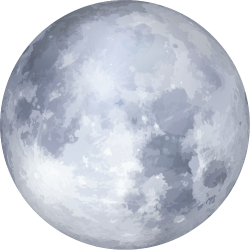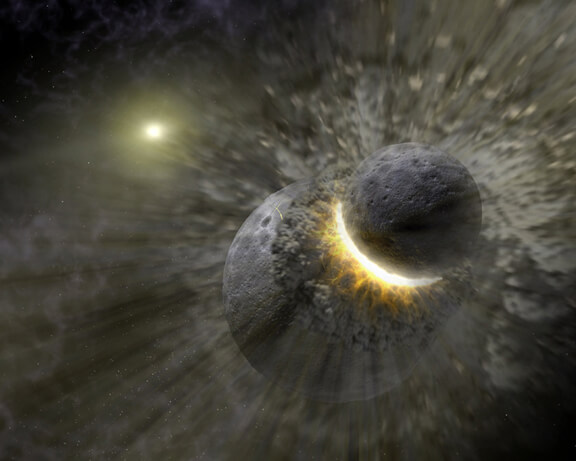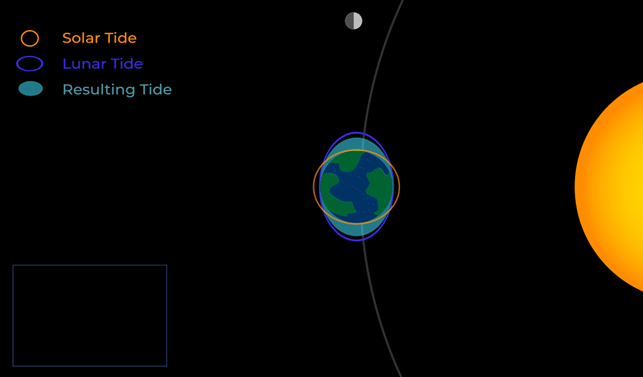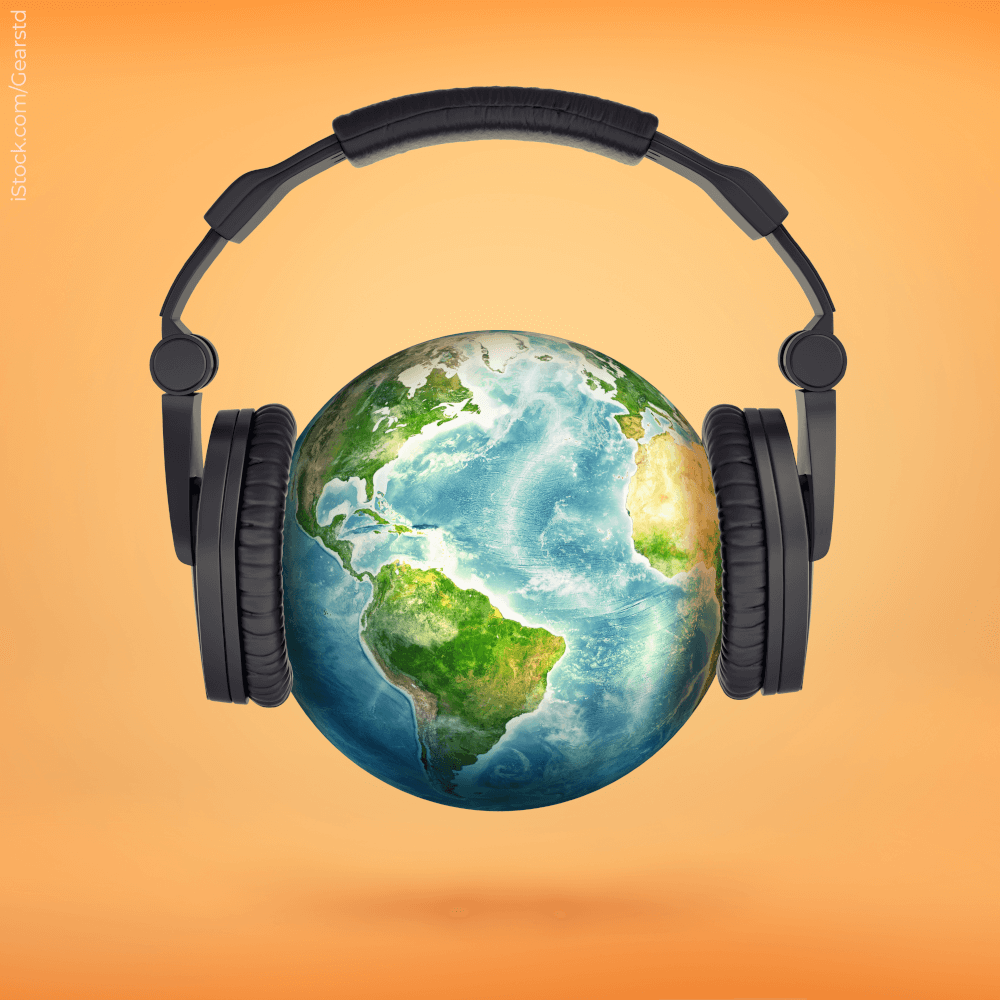The Moon
Picture credits


The moon is Earth’s only natural satellite. It orbits it at a distance of about 400,000 km, which is about 1,000 times further away than the orbit of the ISS. One orbit of the moon around the earth takes about 27 days, hence the word month.
The moon fits inside Earth around 50 times – normally, a moon is much smaller compared to “its” planet. The earth’s moon is really huge for a planet the size of Earth!

The so-called giant impact scenario explains most of the features of the Earth-Moon system: about 4.5 billion years ago, shortly after the formation of the Solar System, a Mars-sized planet called Theia collided with the earth’s predecessor at a speed of over 9 kilometres per second. The collision was not head-on, the angle of impact is thought to have been about 45 degrees. The iron core of Theia sank into the earth’s core, while part of the rocky crust of Theia and Earth was hurled into space. After several million years, the moon formed from the ejected material.

The moon is the only other celestial body that humans have visited so far. On 20 July 1969, Neil Armstrong and Buzz Aldrin were the first humans to set foot on it. Ten more astronauts followed. Since there is no atmosphere and thus no wind or rain, the astronauts’ footprints remain visible until they are eaten away by meteorites or the solar wind. The US has planned to land humans on the moon again by December 2025 (from May 2023) as part of the Artemis program. A Chinese mission is planning something similar by 2030.

The mass of the moon attracts everything on Earth. However, the gravitational pull is very weak. We see its greatest effect in the tides of the oceans: ebb and flow are a direct result of the moon’s gravitational pull. The tides slow down the earth through friction and transfer energy to the moon. This slowing of Earth’s rotation means that the days on Earth are getting longer: In about 10 million years, a day will last 25 hours.

The earth and the moon are tidally locked: their rotations are in sync so that the same side of the Moon always faces the Earth. People saw the other side of the moon for the first time when the Soviet space probe Luna 3 took the first pictures in 1959. The “dark” side gets just as much light as the “light” side, though, so “far side” is perhaps a better term for this part of the moon.

Audio guide
(available soon)
PhD students from the Institute of Physics at the University of Rostock give exciting insights into their research and explain the universe.
Schätzfrage
With the help of mirrors placed on the moon, the distance between the earth and the moon can be measured very well. It was discovered that the two celestial bodies move further away from each other every year. But how much?
